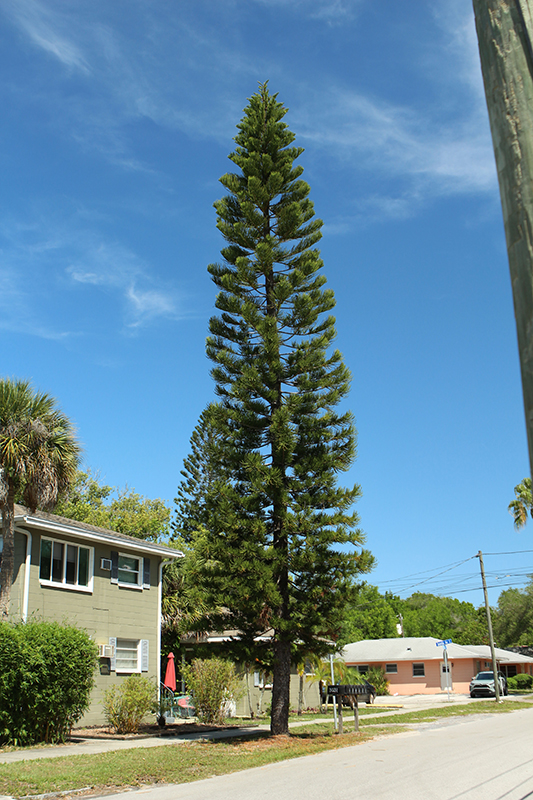Plant Finder
Height: 60 feet
Spread: 18 feet
Sunlight:
![]()
Hardiness Zone: 9b
Other Names: New Caledonia Pine, Columnar Araucaria
Description:
A very fine ornamental tree that is columnar in habit with a curving trunk at the base, and peeling bark; foliage is soft to touch and finely delicate; an incredible accent tree that is tolerant of most soils; great in containers; does not tolerate frost
Ornamental Features
Cook Pine is primarily valued in the landscape for its rigidly columnar form. It has attractive green evergreen foliage. The tiny pointy leaves are highly ornamental and remain green throughout the winter.
Landscape Attributes
Cook Pine is an open evergreen tree with a strong central leader and a narrowly upright and columnar growth habit. It lends an extremely fine and delicate texture to the landscape composition which can make it a great accent feature on this basis alone.
This is a relatively low maintenance tree, and usually looks its best without pruning, although it will tolerate pruning. Deer don't particularly care for this plant and will usually leave it alone in favor of tastier treats. It has no significant negative characteristics.
Cook Pine is recommended for the following landscape applications;
- Accent
- Container Planting
Planting & Growing
Cook Pine will grow to be about 60 feet tall at maturity, with a spread of 18 feet. It has a low canopy with a typical clearance of 3 feet from the ground, and should not be planted underneath power lines. It grows at a slow rate, and under ideal conditions can be expected to live to a ripe old age of 200 years or more; think of this as a heritage tree for future generations!
This tree should only be grown in full sunlight. It does best in average to evenly moist conditions, but will not tolerate standing water. It is not particular as to soil type or pH, and is able to handle environmental salt. It is quite intolerant of urban pollution, therefore inner city or urban streetside plantings are best avoided. Consider applying a thick mulch around the root zone in winter to protect it in exposed locations or colder microclimates. This species is not originally from North America.
Cook Pine is a fine choice for the yard, but it is also a good selection for planting in outdoor pots and containers. Its large size and upright habit of growth lend it for use as a solitary accent, or in a composition surrounded by smaller plants around the base and those that spill over the edges. It is even sizeable enough that it can be grown alone in a suitable container. Note that when grown in a container, it may not perform exactly as indicated on the tag - this is to be expected. Also note that when growing plants in outdoor containers and baskets, they may require more frequent waterings than they would in the yard or garden.




